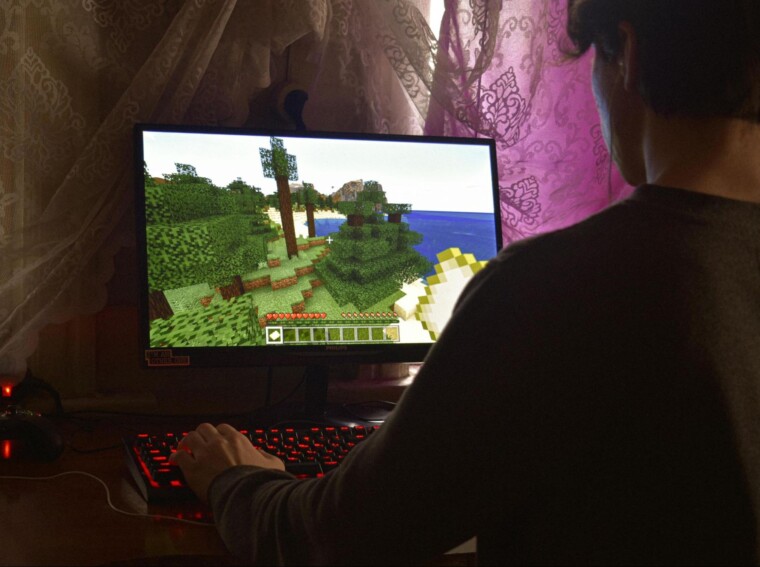Gaming captivates the human mind like nothing does. The pursuit of the game, be it fitting blocks, solving puzzles, or conquering distant galaxies, makes time evaporate.
Gamers often report that they have no idea where time flies. This immersiveness of games, losing time entirely, is a unique phenomenon. But why is gaming so immersive? The answer lies in a combination of psychological factors, storytelling, and interactive design, which creates a compelling experience.
We go deep into the mechanics of gaming that make playing them so engrossing, exploring some of its implications as well.
The Elements of Immersion
There are over 2.6 billion gamers in the world., according to Statista, and this market size provides an incentive to game developers to make them immersive. A set of intriguing elements work in sync to hold a player’s attention fixated on a game:
Interactive Storytelling
Like gaming, movies are immersive too. But when we are watching a movie, it’s a passive viewing experience. Games allow players to become active participants in the story. Choices and consequences within the game make the experience personal and engaging.
This interactive nature makes each game unique to the player. The game design and story become a playground for the gamer to explore virtually. The story world becomes a separate reality for the gamer, a unique dream universe.
Flow State
A flow state, with respect to work, is when there is full focus on the task at hand. This is when all distractions disappear, and there is no fatigue after the state subsides. In gaming, this mental condition occurs when the player is fully absorbed in the gameplay.

Flow occurs when the challenge of the game matches the player’s skill level. A fragile balance is created, which, like the Goldilocks story, is a perfect fit for the gamer. It’s rewarding and challenging but not too overwhelming to make the player stop.
Social Connections
Multiplayer games add a layer of social interaction, with players making like-minded friends inside the game and in the gaming communities. They also form bonds with fellow players that they don’t even know in real life and also form rivalries. These connections encourage extended gameplay to maintain relationships and achieve group goals.
Reward Systems
Gaming has a unique characteristic: immediate feedback of your actions. It’s an instant dopamine hit, as it rewards or punishes you, making it extremely engaging. Achievements, unlockables, progress bars, and even the background music tap into the gamer’s brain and release the feel-good chemicals, providing constant gratification.
The Role of Game Design
Game developers spend months and even years carefully crafting experiences to maximize immersion. Elements like stunning visuals, atmospheric music, and intricate level designs pull the players into highly immersive virtual worlds.
Open-world games like Elden Ring or the Grand Theft Auto series use vast landscapes and hidden treasures to evoke curiosity, encouraging players to explore for hours and even days in some cases. These lead to certain addictive behaviors in many young adults. This is especially true when the gameplay has other elements like reward systems and interactive storytelling.
Not many people would be aware, but there is a video game addiction lawsuit that argues that many video games were designed with inherently addictive gameplay. These games failed to provide any warnings to the gamers or their parents.
The Psychology of Time Loss
Losing track of time while gaming is a common phenomenon rooted in psychology. Games create a distorted sense of time perception, mainly through these aspects:
- Continuous Goals: Most games present players with a series of objectives that feel achievable within minutes but often lead to hours of play.
- Emotional Investment: When players are deeply engaged in a story or mission, emotional involvement can override any awareness of time.
- Minimized Distractions: Gaming environments are designed to capture full attention, leaving little mental bandwidth for any external activity that can provide a time cue.

These aspects combine to make gaming seem timeless, which can be both a source of enjoyment and a concern.
The Downsides of Immersive Gaming
While immersion makes gaming enjoyable, it also has drawbacks when balance is lost. Extended playing sessions can lead to physical health issues and disrupted sleep patterns. This can affect relationships in the real world.
When gaming becomes compulsive, many gamers struggle to manage daily responsibilities. TorHoerman Law notes that recognizing the signs of problematic gaming behavior is critical for those who want to take action.
Making Informed Choices
The science of immersion explains why gamers lose track of time, revealing both the wonders and challenges of gaming. By understanding the mechanisms behind engagement, players can make informed choices about their gaming habits.
This also ensures that they enjoy the benefits without falling into unhealthy patterns.
